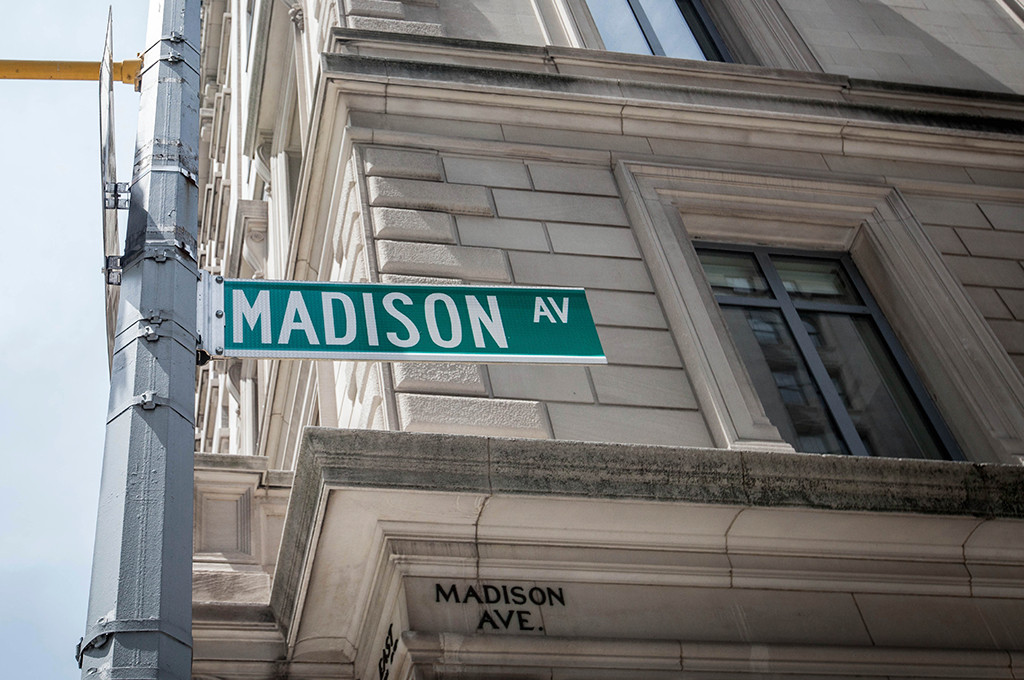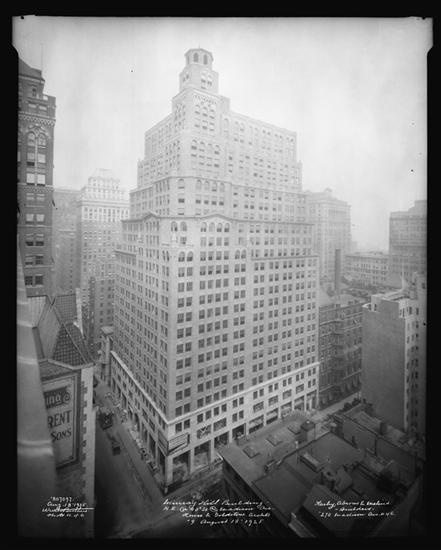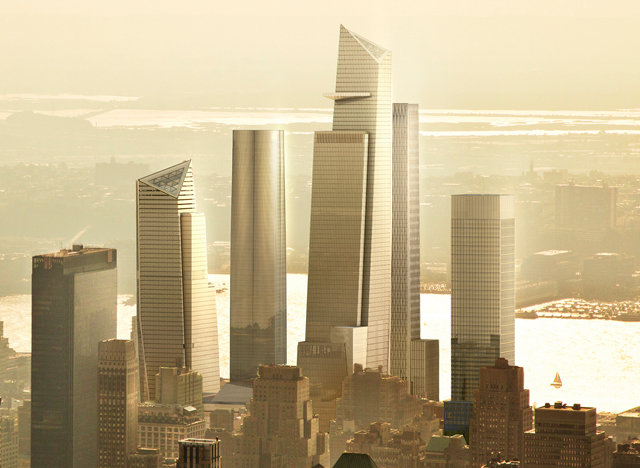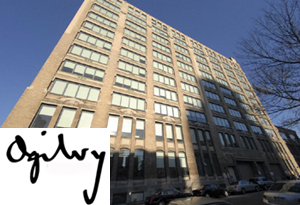During the period depicted in the TV series “Mad Men,” New York was the focal point of the world’s advertising industry. The real–life Don Drapers at Young & Rubicam, Ogilvy & Mather, J. Walter Thompson, BBDO, McCann Erickson and others were creating Madison Avenue as we’ve come to know the term. It was their creativity that helped the leaders of the advertising industry foresee the importance that technology was to play in their field. This foresight, combined with the need to be more frugal, led to the gradual physical abandonment of Madison Avenue. In effect, these ad execs preempted the Internet and how that would affect the advertising world.
Plus: Five folks who’ve transformed the workplace | It’s time to get the workplace right
In 1925, Young & Rubicam moved into its new home at 285 Madison Avenue, and the herd soon followed. Madison Avenue became the literal center of the advertising world.
Young & Rubicam’s former headquarters at 285 Madison Avenue (Collections.mcny.org)
But by the ’90s, the gloss had worn off the physical Madison Avenue: In 2014, Y&R sold the building it eventually owned and decamped to the redeveloped 3 Columbus Circle. Instead of being surrounded by the congestion and fumes of Madison Avenue, Y&R is now adjacent to the (current) Time Warner Center. Other advertising titans departed Madison Avenue, as well. Why?
Young & Rubicam’s current headquarters adjacent to Time Warner Center (Worldpropertyjournal.com)
Let’s refer you to Y&R Global CEO David Sable himself, who declares: “Madison Avenue is a state of mind … We’ve got great common spaces and terraces and a café — all kinds of spaces for people to work in ways that work for them and, as a result, create the best work possible for our clients. That’s Madison Avenue rewritten for our times.” In other words, Y&R and other firms like them were seeking open space, light and technology and economical effectiveness.
Also: Relocation provisions in office leases | Five pillars of an authentic workplace
As for the Time Warner Center: its eponymous tenant moved there in March of 2004, just after the center was completed. In 2019, Time Warner will move to Hudson Yards (now under construction) on the far West Side of Manhattan. Time Warner is a TAMI (technology, advertising, media and information) tenant par excellence, and since the inception of radio, advertising and broadcast companies have been tied at the umbilical. Later, TV was a natural bedfellow for advertising groups. And now, it’s the Internet also.
Rendering of new Time Warner Building at 30 Hudson Yards (Newyorkyimby.com)
So, whither the TV and Internet companies go, so go advertising companies. Let’s look for a moment at another well-known advertising company, Ogilvy & Mather. When it moved in 1989 to the new Worldwide Plaza at 825 Eighth Avenue, people were asking, “Why would such a company want to be in the wilderness west of Broadway?”
That was 1989: The owner of Worldwide Plaza wanted to lure tenants to that part of town. In order to do so, apart from a technologically advanced (at least for 1989) building, it had to offer prospective tenants serious economic incentives. O&M took advantage of that and made the move. And yet 20 years later, Ogilvy & Mather moved even further west to 636 Eleventh Avenue, a former manufacturing building located almost one mile away from the nearest subway station. In the late 1990s, 636 was converted to a telco hotel and thus had plenty of power to aid communications. Otherwise, it seemed to be in the backwoods and, at the time, expensive. But O&M executives may have had the last laugh: Perhaps they foresaw the westward movement of similarly-minded companies – a migration that will culminate in the development of the nearby Hudson Yards, where tenants like Coach, Time Warner (including CNN) and L’Oréal have already committed to new spaces and where many other tenants are trolling for space.
636 Eleventh Avenue (Therealdeal.com)
Ogilvy & Mather will be closer to the broadcasting action than the newly relocated Y&R (which part of the same WPP stable as O&M) – this in addition to the much higher rents the tenant of Hudson Yards will be paying in comparison to O&M.
So, although Madison Avenue has moved west, it still exists — albeit as a state of mind. Maybe Google and other TAMI friends will now be the new location arbiters for Madison Avenue.
A lawyer by training and background, Richard is Executive Director of Colliers International in New York. For the last 20 years he has advised corporate tenants globally on how to avoid the pitfalls that landlords lay in store for them. When not working with clients or thinking of innovative ways to assist them, Richard spends his time immersed in history, theatre, travel and reading.

 Colliers Insights Team
Colliers Insights Team






 Coy Davidson
Coy Davidson